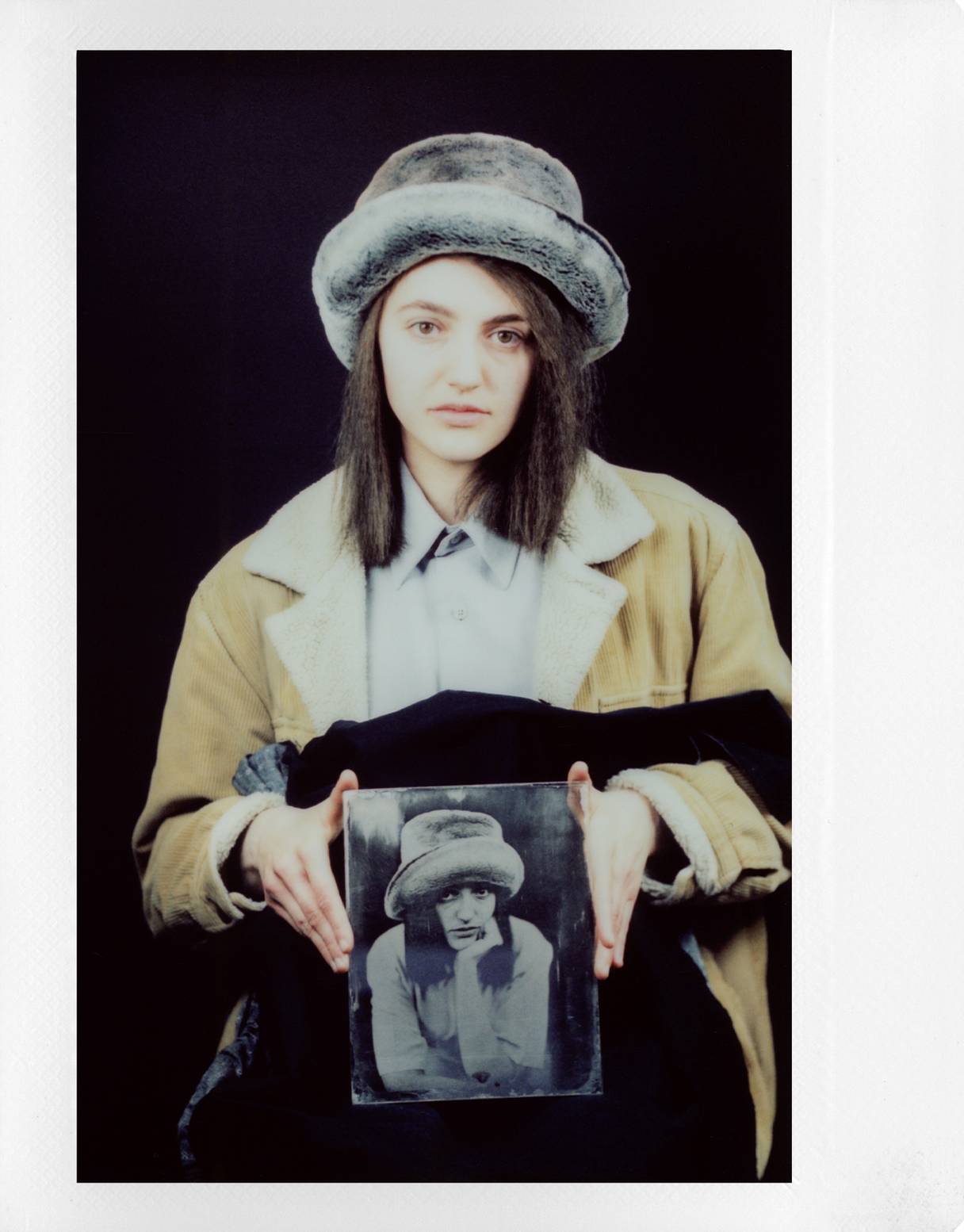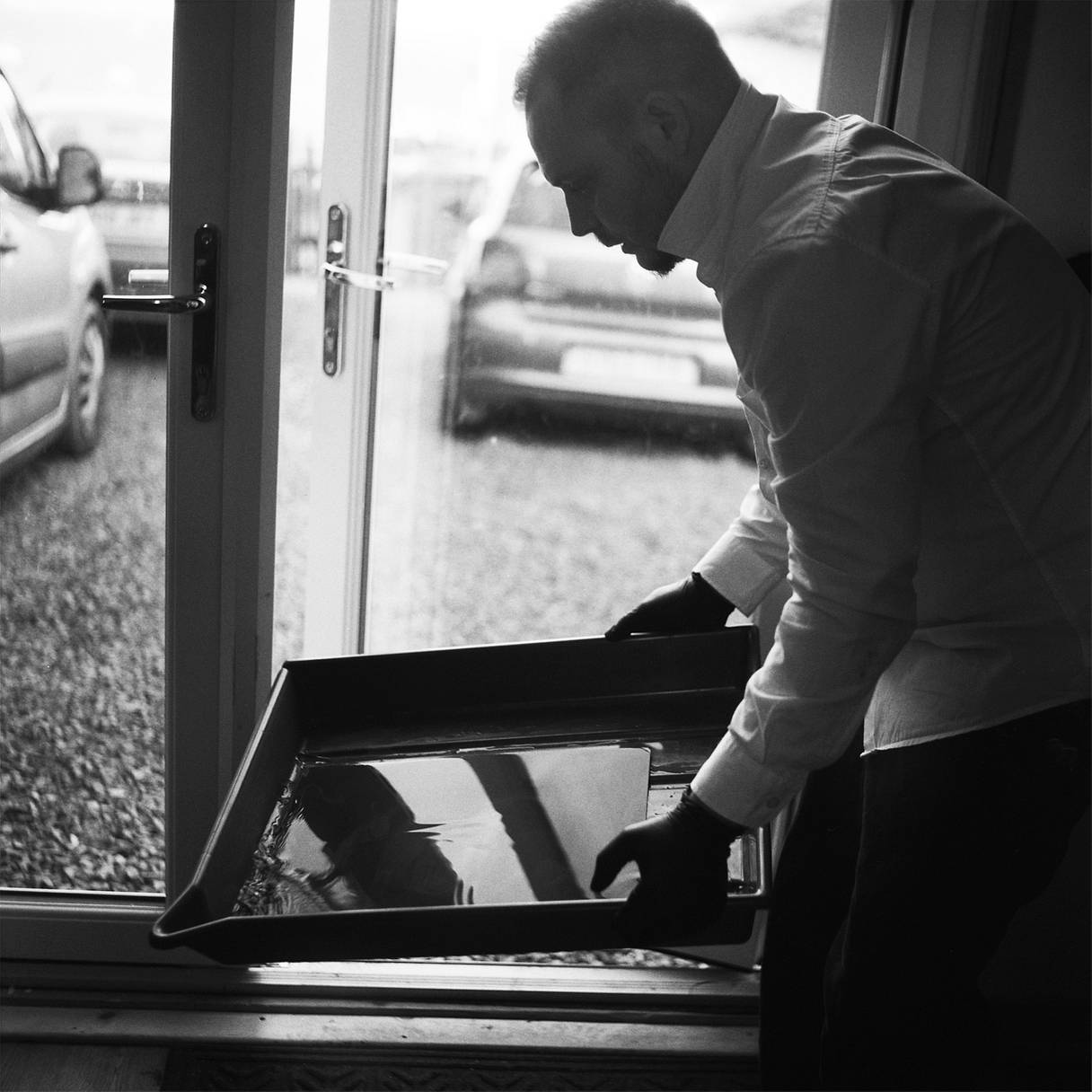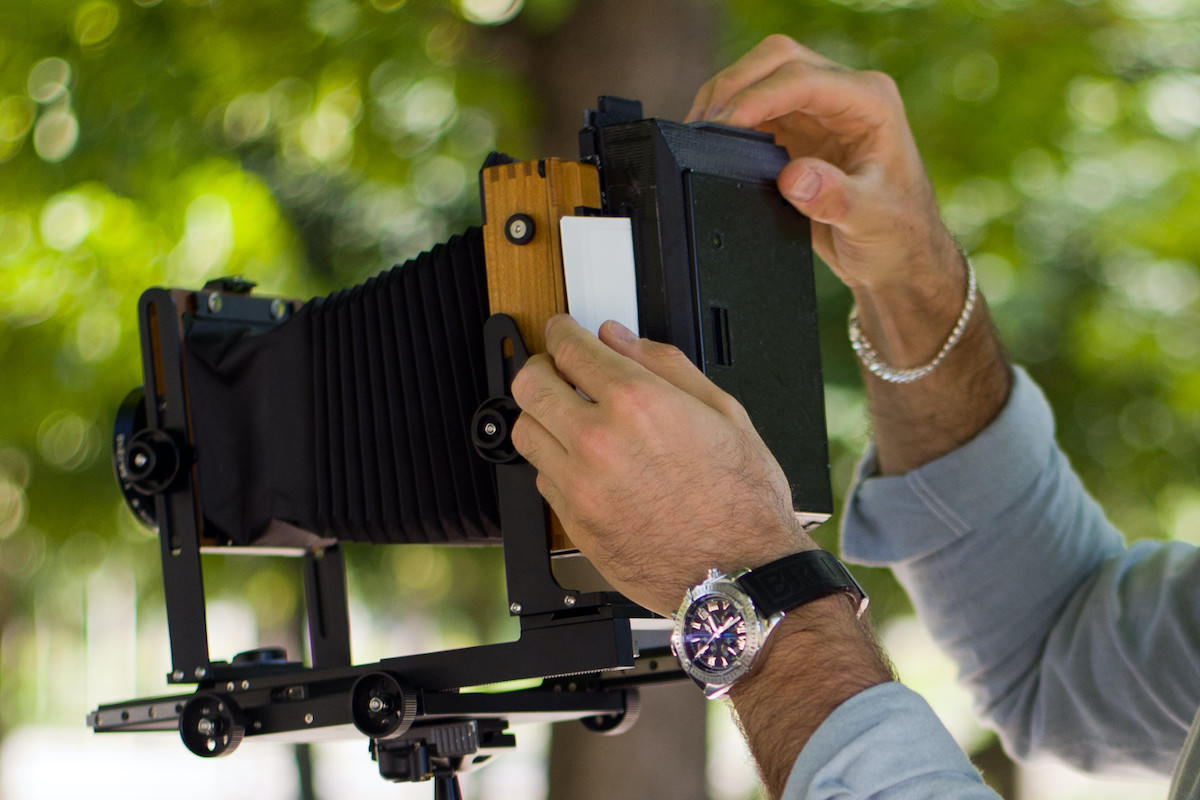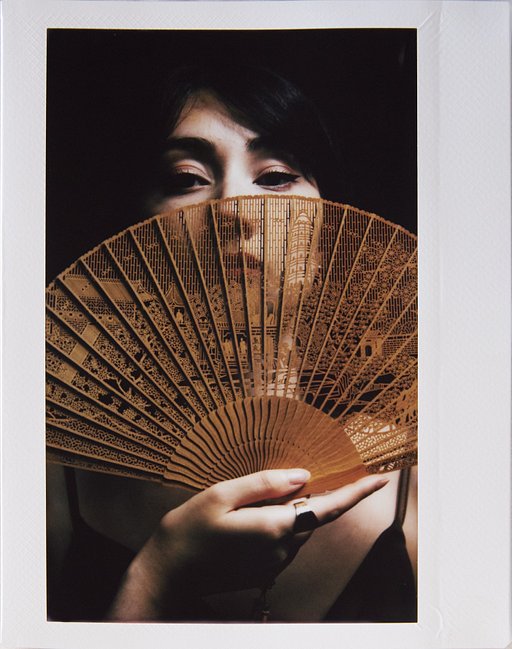Hiking to The Cuillin with Simon Riddell and the LomoGraflok 4×5 Instant Back
10 Share TweetWe originally spoke to Simon Riddell back in 2020 where he talked about his Mental Collodion project. We caught up with him to find out how the project was progressing and share with us his experiences of shooting with the prototype of the LomoGraflok 4×5 Instant Back in different, and sometimes challenging situations.
Hello Simon, please introduce yourself to our community?
Since launching the Mental Collodion project I have produced over 50 plates, in collaboration with my sitters and some self-portraits. Everyone has found the process to be very cathartic and worthwhile, with masses of positivity emerging from the two exhibitions to date. I was also awarded a commission from the Spirit360 initiative in the Scottish Highlands, where I chose to shoot the portraits of my fellow Lifeboat Crewmembers. Further to that, Mental Collodion was successful in a funding application that has helped to buy materials to allow the experimentation process around online wet plate collodion sessions. I can confirm that it is possible to produce excellent wet plates in this manner, although the exposure times are about 5 times longer than ‘in person’ sessions. This makes for an interesting experience and, in my opinion, only makes the final plate feel even more valuable in terms of effort.
To celebrate the first chapter in the project, I am making a book, called “Mental Collodion: A Celebration of Our Resilience”. I want to shine a light on the project and the people who it attracted to sit with me for a few hours. The book will encompass the brilliance of these people, of whom I’m now proud to call my Brothers and Sisters. There will be a narrative of each person and some behind-the-scenes content, including some shots of us working in the studio. t was a great insight into the human condition to work with people from all walks of life, who all seemed to have experienced similar states of mind and depicted these emotions so graphically on our plates. The use of multiple exposures is integral to this process, I feel it helps us show who we really are, and what we’re truly feeling.
How did you get into shooting with large format cameras?
A natural progression from medium format, I guess. I’ve had a fairly speedy journey to large format from 35 mm, always searching for the tool to offer me more potential for creativity. I remember using the early Lensbaby equipment on my Dad’s Canon, thinking it was wonderful to be detached from the normal fixed positions. When I started to use the Bronica ETRSi I loved the jump up in size, of both the camera and perhaps more, the negative. I felt a deeper connection to my work when I was in the darkroom. Then I saw the Mamiya RB67 in action, which I think is the first camera with bellows I used. It set me on the path to where I am now, having just finished building my own Ultra Large Format Camera, shooting 16×16 inch plates. It uses a Swift & Son’s brass lens from the 1860s which opens to f4. I am over the moon with the camera build, which centres around the back focusing of the Durst Laborator enlarger. This is Isaac, my son, helping me one night with finishing off the build. The lens is mounted to a 4×5 inch Toyo standard which allows the large format camera movements. We also built reducing backs which allow me to shoot down to the Fuji Instax Wide film.

How did you find shooting with the LomoGraflok?
It was fantastic to use the first prototype, especially with the black and white film you sent! The fact it was so portable, and light meant that I packed it with the wet plate gear and headed in to the Cuillin Mountain in the Isle of Skye. During my initial recce, I decided that I wanted the LomoGraflok with me throughout what was shaping up to be a year-long project, called “Peak Perseverance”, where I aim to document the Cuillin using collodion methods, from the base of the Mountain, to (hopefully) shooting plate at the summit. The sheer effort and high risk of failure involved with shooting wet plate collodion outdoors is insane, let alone taking it away from the comforts of a darkroom/darkvan and walking the gear in with you. It quickly became apparent that this project would produce some amazing results when everything was in my favour, but that this might not happen a great many times! The Cuillin is regarded as the place to go in the UK for mountaineering as it has exceptionally stunning landscapes and technical climbs. The atmosphere is immense up there, but the conditions can and often are, absolutely brutal, changing constantly just to further enhance the challenge. Having the LomoGraflok in my pack meant that no matter what the conditions were doing, I would be able to at least document the fact that I had hiked to where I was, with the intention of shooting plate! It enabled me to take something tangible home, which was fantastic for my morale! It also reminded me just how hard this project was, and that I shouldn’t beat myself up for not being able to turn out some plates if I had failed. Also, being able to share my journey with others by showing a piece of analogue instant film is supremely cool. Ideally, I would like to write a book over the year, and hopefully, the film will be there to document the journey! Here are some shots of me shooting wet plate at “Sligachan”, looking out to the Cuillin. I was testing the Ilford pop-up darkroom at the time.
Shooting with the LomoGraflok in the studio was also a blast! Lucinda Lewis and I were putting on a demonstration for the local press, in terms of the Mental Collodion project, and the LomoGraflok had just arrived in the post that morning, so as I set about mixing chemicals, Lucinda loaded the film and set everything up on the Intrepid 4×5inch field camera. Within a minute of unwrapping it all we were shooting our first portraits. Here is Lucinda, pictured, holding the wet plate collodion ambrotype we shot for the press. Lucinda is also a fabulous analogue photographer and took her Mamiya along to shoot some “Lady Grey, Lomography film”. I love the documentary feel to her shots. Fantastic job on the film too!
What are the challenges involved with shooting large format?
There can be many! It’s a tough one to answer as the challenges vary so much with your chosen subject and/or environmental constraints. Personally, analogue is the only way I want to shoot or create my art, and the creativity that the movements of a large-format camera afford me is absolutely crucial. I think the obvious challenge with large format is the amount of gear required, and its size/weight. Logistically, there’s only so much you can leave behind if you’re heading out into the field before compromising the shot becomes a very real possibility. I remember unpacking my 8×10 inch Intrepid at the top of a mountain once, only to find I’d cracked the ground glass! These lessons you should only need to learn once, which inherently equates to better protecting your gear and taking spares. So, it’s easy to see how things mount up. Being inventive with your gear and supplies is definitely a challenge in itself. Moving into the arena of wet plate collodion in the mountains is offering me a great deal of potential to learn, often through failure. However, I wholeheartedly embrace this as an essential part of the process, if I’m not failing, then I’m not pushing my limits hard enough.
What's coming up in 2022?
There are a lot of really positive things planned for 2022. Obviously, I will be spending a lot of time on Peak Perseverance, but I’ll also be touring around the Isle of Skye hosting walk-in wet plate collodion sessions – a way of bringing this unique artform to more people, and of course, the LomoGraflok will be coming with me, I love using the instant film format on the back of the ULF camera, it’s a great combination and really brings people in to ask questions! Throughout March 2022 there is an exhibition of a variety of my art including Mental Collodion at the Skye Bridge Studios, with an open-day demonstration towards the end. I have another exhibition planned at Scottish Parliament which I’m excited about, and I hope to be finished the Mental Collodion book for that event later in the year. There will also be a great deal of work carried out to raise funds to support Mental Collodion into the future. Acquiring financial support often seems like a never-ending battle, but hopefully, the project is making a difference to people. I’d like to thank everyone for their support over this past year.
To see more of Simon's works follow his Mental Collodion page which supports mental health through photography and his personal Instagram page.
2022-03-24 #news #people #large-format #4x5 #scotland #skye #collodion #simon-riddell #lomograflok #mountain-walking #the-cullin



























No Comments